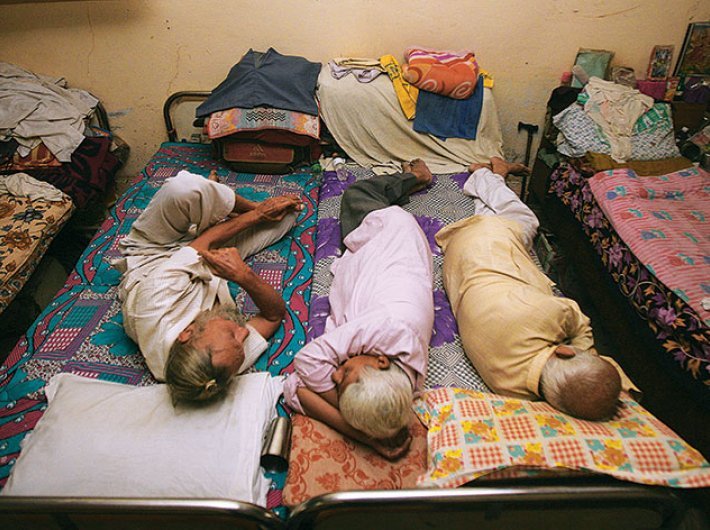Average life expectancy at birth up from 49.7 (1970-75) to 69.7 (2015-19): Under-5 Mortality Rate down from 45 (Per 1,000 live births) in 2014 to 35 in 2019
Average life expectancy at birth has been increasing in India over the past half century, along with progress in healthcare facilities. It has gone up from 49.7 during 1970-75 to 69.7 during 2015-19, registering an increase of 20 years.
The figures come from the ‘Sample Registration System (SRS) based Abridged Life Table 2015- 19’ published by the Office of the Registrar General & Census Commissioner:
https://censusindia.gov.in/census.website/data/SRSALT
The ‘life table’ is a mathematical table which gives the life history of a hypothetical group or cohort as it is gradually diminished by deaths. It gives the probabilities of death and survival at various age groups. A life table summarizes the mortality experience of a population during the period of study and provides concise measures of the longevity of that population.
In the words of William Farr, life table is the ‘Biometer’ of the population. The data for construction of life tables considers both deaths and the population exposed to risk of death classified by age, the report, published in June 2022, of the Office of the Registrar General & Census Commissioner notes.
In India, life expectancy at various broad age groups has been estimated through Sample
Registration System (SRS) since 1970-75. The SRS is a large-scale demographic sample survey based on the mechanism of a dual record system with the objective of providing reliable estimates of fertility and mortality indicators at State and National levels for rural and urban areas separately. The estimated age-specific death rates derived from the SRS provide the necessary database for undertaking construction of abridged life tables.
To adjust for the sampling fluctuation and for augmenting the sample size, five-year average is compiled for estimating age-specific death rates separately for rural and urban areas, both for male and female.
Highlights
The latest report on ‘SRS based Abridged Life Tables 2015-19’ contains the probabilities of death and average longevity at various broad age groups. The life tables are presented for India and bigger States/Union Territories, by sex and residence. The salient features of the report are:
* Expectation of life at birth for India has been estimated at 69.7 years for 2015-19, exhibiting an increase of 0.3 years from 2014-18. The life expectancy at birth varies from 65.3 years in Chhattisgarh to 75.9 years in Delhi.
* The expectation of life at birth is 68.3 years in rural areas and 73.0 years in urban areas for 2015-19. The life expectancy has increased by 0.3 years and 0.4 years respectively for rural and urban areas as compared to 2015-19.
* At the national level, the life expectancy at birth for males has been estimated at 68.4 years and that for females, at 71.1 years. Expectation of life at birth is highest in Delhi (74.3 years) for males and in Kerala (78.0 years) for females, whereas it is lowest in Chhattisgarh (63.7 years) for males and Uttar Pradesh (66.2 years) for females.
* For 2015-19, the life expectancy at age one year (after surviving through the first year of life) has been 69.9 years and 72.9 years for males and females, respectively.
* The expectation of life at age 60 is 18.3 years for 2015-19, with 17.5 years for males and 19.0 years for females.
* For 2015-19, Delhi has recorded highest expectation of life for age till 50 years, while Punjab has the highest life expectancy for ages between 70 to 80 years. At the age of 85+ years, Uttarakhand scores the highest life expectancy. The minimum expectancy of life is in Chhattisgarh till age 75 years, beyond which Bihar has the lowest life expectancy.
* Almost all the states/UTs have recorded a higher life expectancy for females in 2015-19 both across the rural and urban areas, except for Bihar and Jharkhand. On an average, female life expectancy at birth is more than male life expectancy at birth by more than two years. Even at age 70 years, this difference is favorable towards females by about one year.
* The gap between the rural and urban life expectancy has also narrowed down significantly from 1970-75 to 2015-19. In case of life expectancy at birth, most of the states have reported higher life expectancy in urban areas than in rural areas, except for Kerala. There is a difference of about 4.7 years in urban-rural life expectancy at birth and about 1.6 years in urban-rural life expectancy at age 70, for the country.
Child mortality rate down
As per the latest report, the country has also recorded notable improvement in child mortality by reducing the Under Five Mortality Rate (Per 1,000 live births) from 45 in 2014 to 35 in 2019.
The ministry of health and family welfare (MoHFW) provides support to states/UTs in the implementation of Reproductive, Maternal, Newborn, Child, Adolescent Health and Nutrition (RMNCAH+N) Strategy under National Health Mission (NHM) based on the Annual Programme Implementation Plan (APIP) submitted by the States/UTs for improving the overall health of the children in the country, union minister of state for health and family welfare Dr. Bharati Pravin Pawar stated in a written reply in the Rajya Sabha Tuesday.
Some of the key interventions of the government are Facility Based New-born Care, Community Based care of New-born and Young Children, Mothers’ Absolute Affection (MAA) Programme, Social Awareness and Actions to Neutralize Pneumonia Successfully (SAANS) Initiative, Universal Immunization Programme (UIP), Rashtriya Bal Swasthya Karyakaram (RBSK), Nutrition Rehabilitation Centres (NRCs), Intensified Diarrhea Control Fortnight / Defeat Diarrhea (D2) Initiative, and Anaemia Mukt Bharat (AMB) Strategy.


